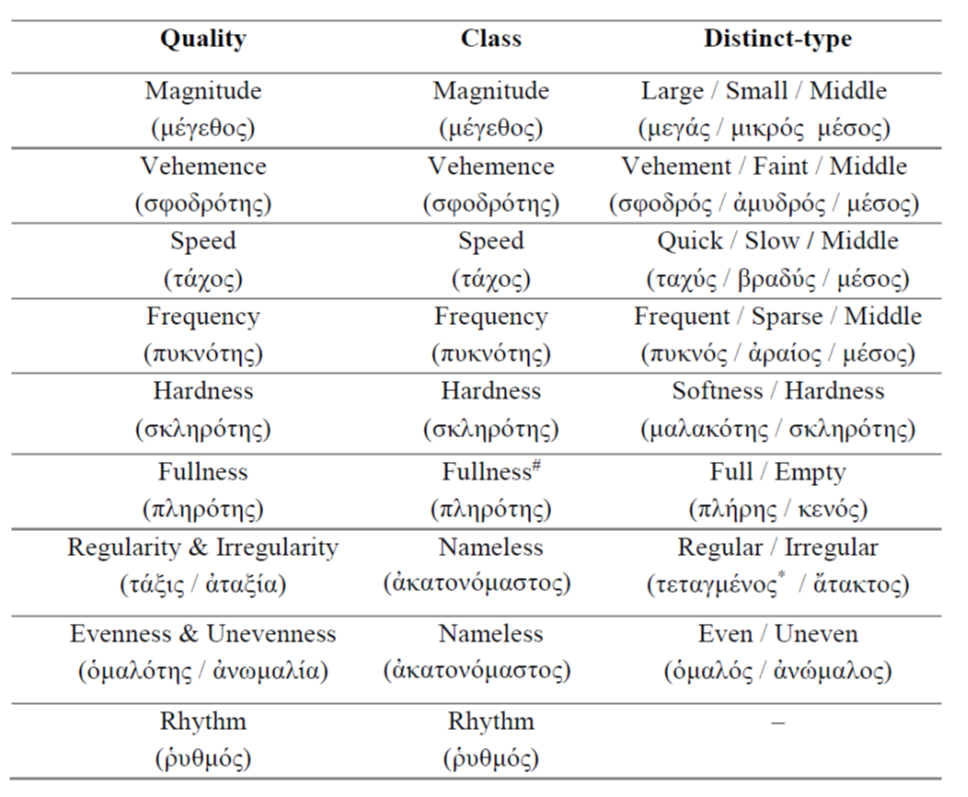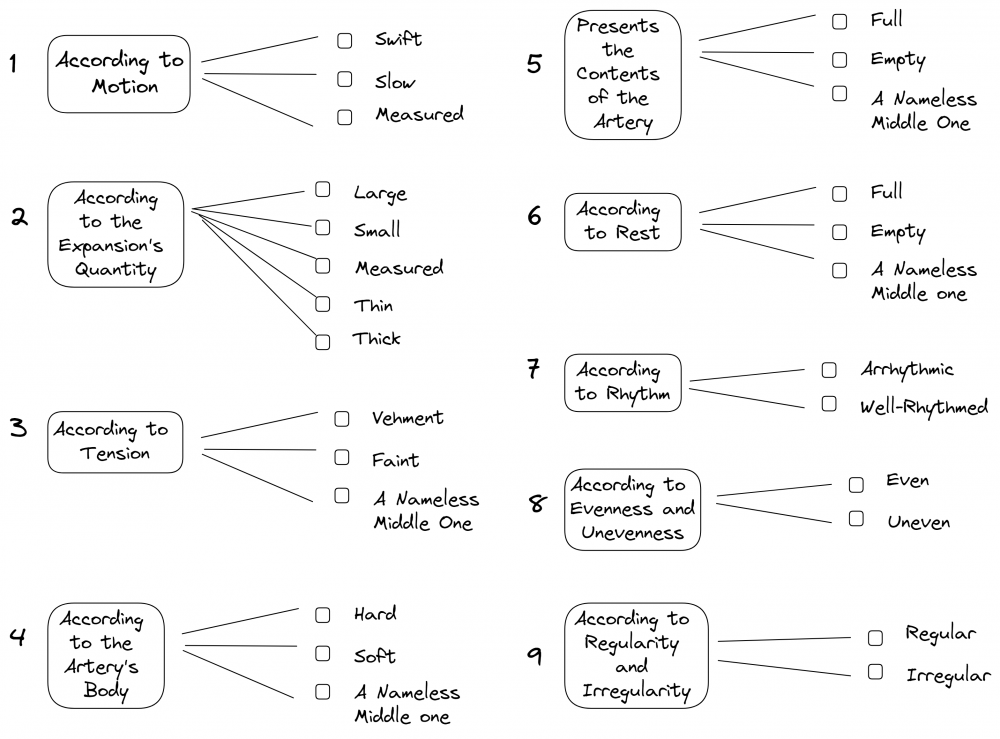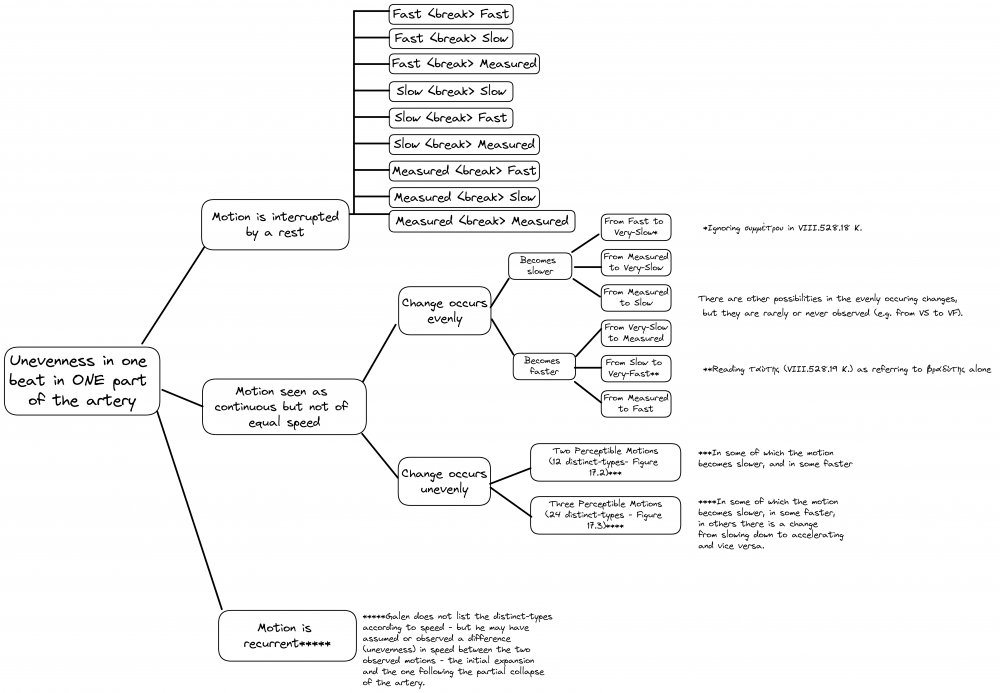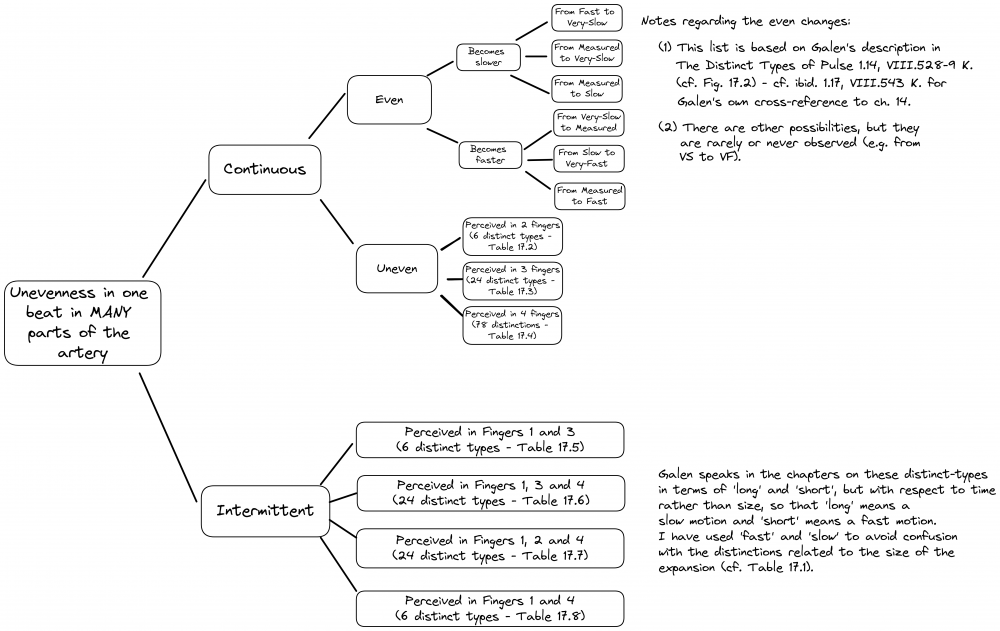The Pulse in Antiquity: Theory and Clinical Method
A major part of my research is dedicated to Greco-Roman theories and methods concerning the complex process of medical diagnosis. A key focus of mine in this respect is the use of the pulse as a diagnostic tool and indicator.
In my monograph on Praxagoras I address the earliest evidence for an understanding of the pulse as a natural motion of the arteries and its diagnostic application. Through a close study of the fragmentary evidence on Praxagoras, I examine the theoretical and empirical evidence leading Praxagoras to these novel ideas and explore his clinical application of them for diagnosing patients.
I have studied the further history of the pulse in the Hellenistic and Roman periods in my collaborative work of the Ps.-Aristotelian treatise On Pneuma (particularly in the papers on the theory and context of the treatise), in my study of the fascinating treatise on pulse by an author named Marcellinus, in my collaborative work on the Pneumatists and recently in studying Galen’s extensive writings and theories on the pulse. The latter include a close discussion of his arguments with the Pneumatist physician Archigenes, and a forthcoming chapter in the Oxford Handbook of Galen on Galen’s theory and clinical use of the pulse in diagnosis.
 |
 |
 |
|

